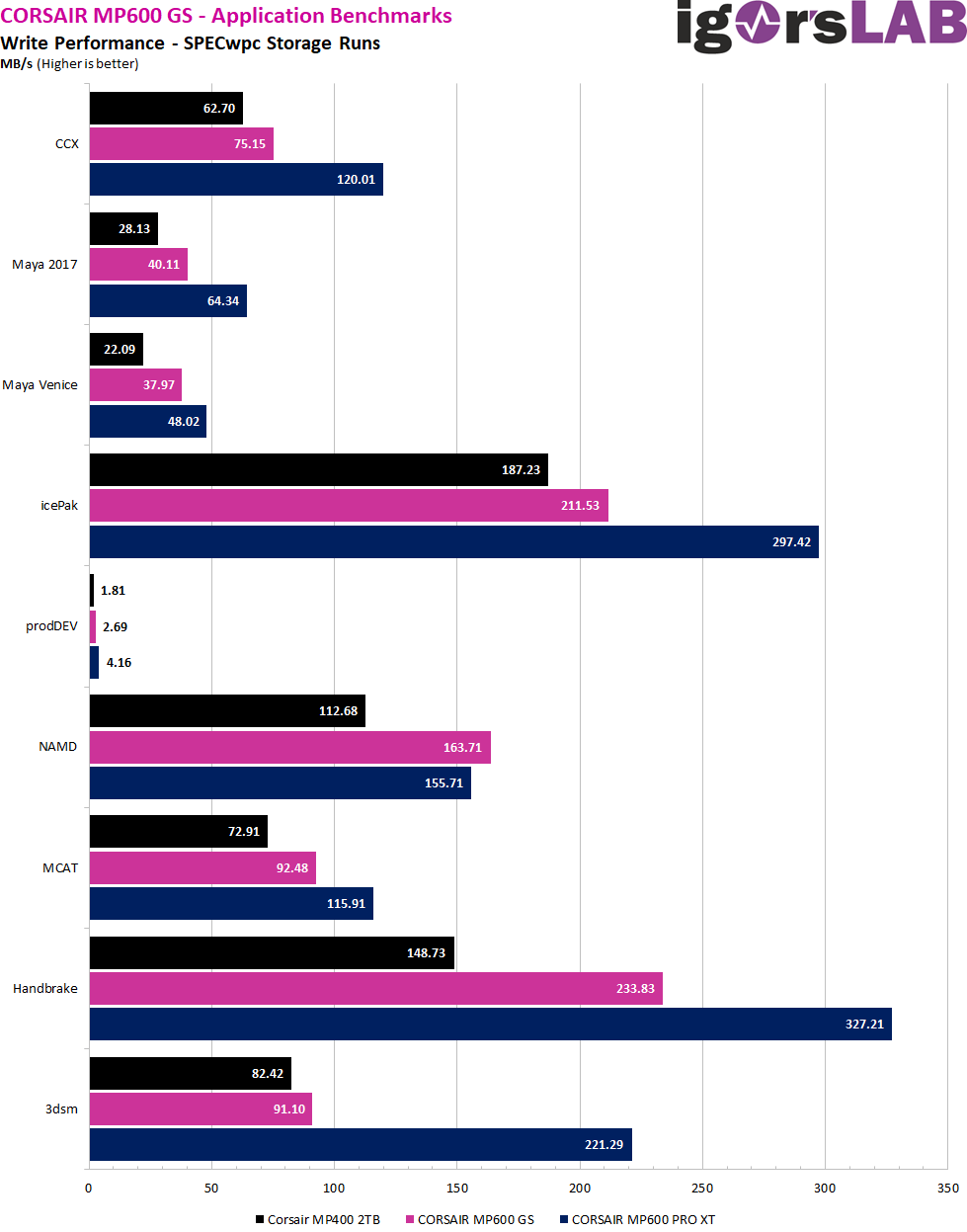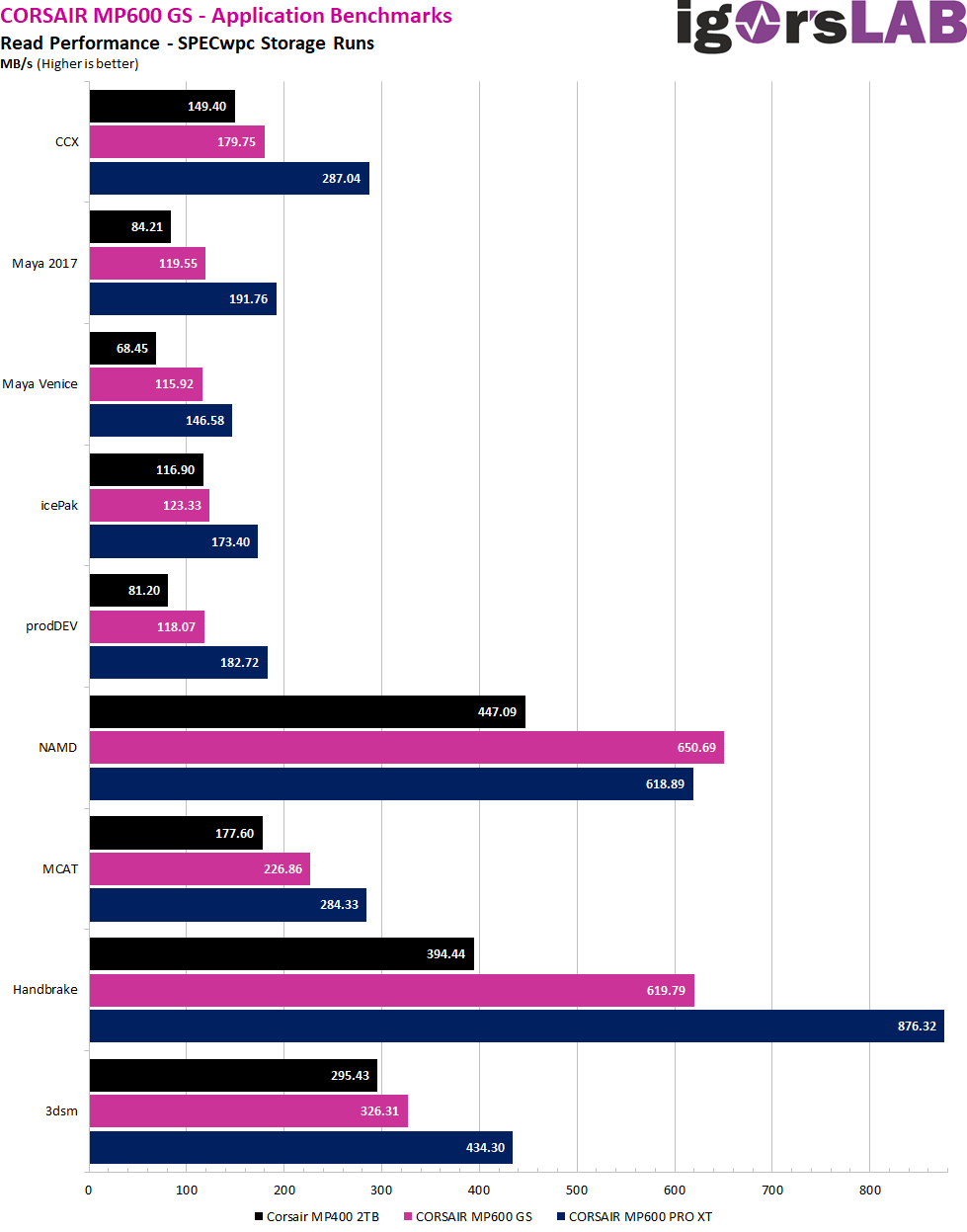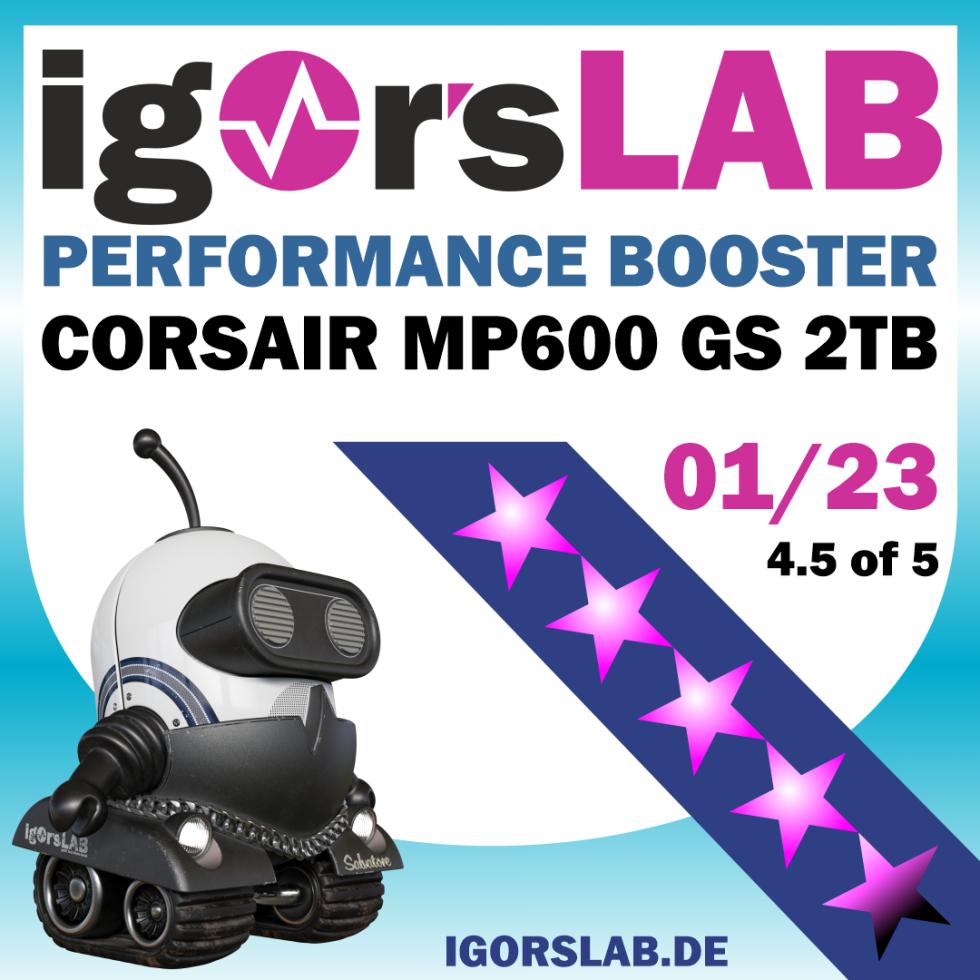Let’s now move on to a direct comparison with the other 2 TB SSDs in the form of the MP 400 (QLC) and the considerably more expensive MP600 Pro XT (TLC) in the real life of a workstation. The following benchmarks show very clearly that the QLC version loses significantly in EVERY case (also subjectively noticeable), while the MP600 GS is placed in the middle of the tested models. Especially programs like Ansys Icepak weaken enormously when writing, because the MP600 PRO XT’s lead is extremely high, while the GS almost falls to MP400 level. However, NAMD are a nice counterexample here, where the GS can easily beat even the Pro XT. The famous ATTO effect has probably struck again. 🙂
Reading is very similar, with exceptions like NAMD, the performance boost compared to the QLC-SSD is usually extreme, but not quite as extreme as the advantage in writing – leaving Handbrake aside. So the dynamic pSLC cache works after all. At least as long as the NAND technically allows it. When reading, the cache is rather irrelevant anyway.
Yes, the performance is completely sufficient even for applications. And so you really have to consider whether you can really feel it subjectively and whether it really increases the productivity in the individual case so that the surcharge to the MP600 PRO XT is worth it at all. If you can answer no, you will certainly do everything right with such a mid-range SSD, regardless of the provider, even if Corsair is somehow ahead in most applications.
Summary and conclusion
If you value performance, then the Corsair MP600 GS is actually exactly what is currently completely sufficient for the end user technically and with normal, financial expenditure. If you look at exceptions like NAMD, then Corsair apparently mustered up the courage and had the Micron design optimized once again individually via firmware. Otherwise, Atto would probably not display such cheese. This is exactly what has really succeeded, because the performance fully fits into this price range in the end.
Such an SSD can be recommended to those who are on the hunt for the last ounce of performance and for whom the 5-year (limited) warranty by Corsair takes away a bit of doubt about how long the controller and the Micron NAND can cope with the switch from pSLC and TLC mode without any losses. It is no secret that this is also due to the interaction between controller and flash memory. But Micron hasn’t just been doing this since yesterday. Only the 1200 TBW (per 1400 TBW) turns out to be a bit meager, because the warranty is also limited in this respect after exceeding it. But here, too, the surcharge to the Pro XT because of 200 TBW more is only worthwhile to a limited extent.
Solid product, reasonable price and, as always, the old knowledge applies that the last bit of performance is always the most expensive and you usually don’t need it in real life. Corsair’s MP600 GS is living proof. And just for the record – if you’ve been paying attention, you’ll notice that some of the tests like AJA (see protocol) are already from December. However, the article comes only today, which was due to all the launches with higher priority. Positive for Corsair: the price now fits the product much better, which of course influenced the verdict positively.
The test sample was provided by Corsair without obligation. There was and is no influence on the tests and results. There was also no compensation for expenses and no obligation to publish.



































6 Antworten
Kommentar
Lade neue Kommentare
Veteran
Neuling
Urgestein
Veteran
Mitglied
Neuling
Alle Kommentare lesen unter igor´sLAB Community →